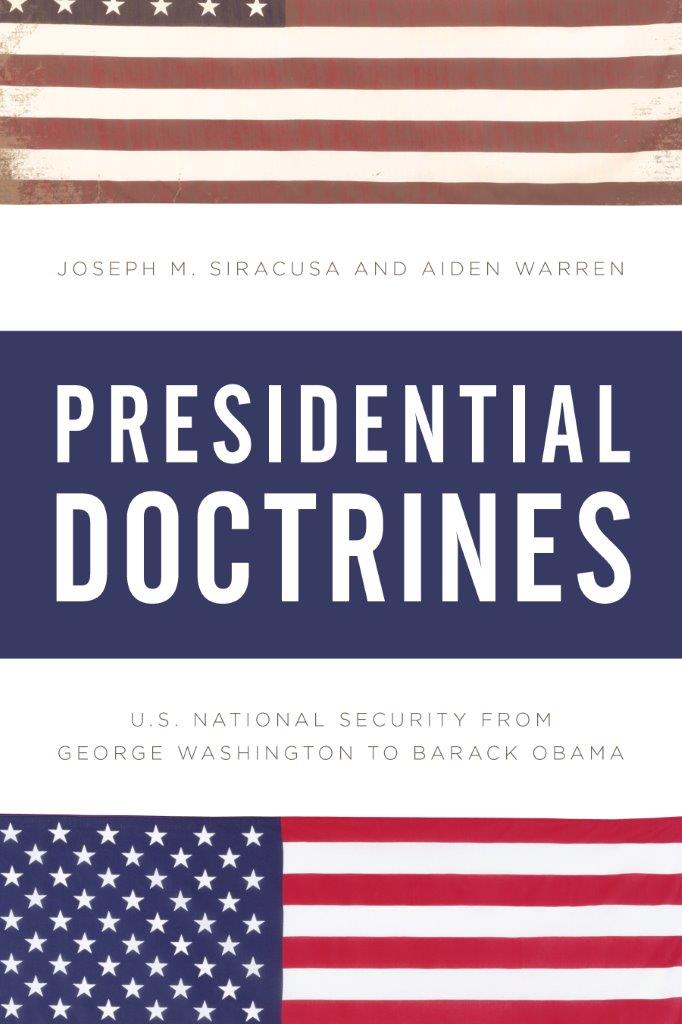Presidential Doctrines
Presidential Doctrines
U.S. National Security from
George Washington to Barack Obama
Joseph M. Siracusa and Aiden Warren
ROWMAN & LITTLEFIELD
Lanham Boulder New York London
Published by Rowman & Littlefield
A wholly owned subsidiary of The Rowman & Littlefield Publishing Group, Inc.
4501 Forbes Boulevard, Suite 200, Lanham, Maryland 20706
www.rowman.com
Unit A, Whitacre Mews, 26-34 Stannary Street, London SE11 4AB
Copyright 2016 by Rowman & Littlefield
All rights reserved. No part of this book may be reproduced in any form or by any electronic or mechanical means, including information storage and retrieval systems, without written permission from the publisher, except by a reviewer who may quote passages in a review.
British Library Cataloguing in Publication Information Available
Library of Congress Cataloging-in-Publication Data
Names: Siracusa, Joseph M., author. | Warren, Aiden, author.
Title: Presidential doctrines : U.S. national security from George Washington to Barack Obama / Joseph M. Siracusa and Aiden Warren.
Description: Lanham, Maryland : Rowman & Littlefield Education, 2016. | Includes bibliographical references and index.
Identifiers: LCCN 2016012244 (print) | LCCN 2016022560 (ebook) | ISBN 9781442267473 (cloth : alk. paper) | ISBN 9781442267480 (pbk. : alk. paper) | ISBN 9781442267497 (electronic)
Subjects: LCSH: United States--Foreign relations--Philosophy--History. | National security--United States--Philosophy--History. | National security--United States--History. | Strategic culture--United States--History. | Military doctrine--United States--History.
Classification: LCC JZ1480 .S5 2016 (print) | LCC JZ1480 (ebook) | DDC 355/.033573--dc23
 TM The paper used in this publication meets the minimum requirements of American National Standard for Information Sciences Permanence of Paper for Printed Library Materials, ANSI/NISO Z39.48-1992.
TM The paper used in this publication meets the minimum requirements of American National Standard for Information Sciences Permanence of Paper for Printed Library Materials, ANSI/NISO Z39.48-1992.
Printed in the United States of America
For our fathers
John Paul Siracusa
Michael John Warren
Acknowledgments
We would both like to thank our respective families in supporting us in this endeavor. Thank you so much for your love, patience, support, and encouraging words.
We also would like to thank Adam Bartley, our valued research assistant, for his fine work on this project.
Professor Joseph Siracusa and Dr. Aiden Warren
Royal Melbourne Institute of Technology University, Melbourne
Acronyms
ABMT or ABM Treaty Anti-Ballistic Missile Treaty
ASIL American Society on International Law
AUMF authorization for the use of military force
CBW chemical and biological weapons
CIA Central Intelligence Agency
CTBT Comprehensive Nuclear-Test-Ban Treaty
DMZ demilitarized zone
DOD Department of Defense
DOS Department of State
DOT Department of Treasury
DPRK Democratic Peoples Republic of Korea
EDC European Defense Community
EU European Union
FOA Foreign Operations Administration
GLCM ground-launched cruise missiles
GOP Grand Old Party (the U.S. Republican Party)
IAEA International Atomic Energy Agency
ICBMs intercontinental ballistic missiles
IMF International Monetary Fund
INF Treaty Intermediate Nuclear Force Treaty
INR Department of States Bureau of Intelligence and Research
IRBM intermediate-range ballistic missile
ISIS Islamic State of Iraq and Syria
LTBT Limited Test Ban Treaty
MENWFZ Middle East nuclear-weapon-free zone
MIRV Multiple Independently Targeted Re-entry Vehicle
NAS National Academy of Sciences
NATO North Atlantic Treaty Organization
NIE National Intelligence Estimate
NLF National Liberation Front
NPR Nuclear Posture Review
NPT Nuclear Non-proliferation Treaty
NSC National Security Council
NSC 68 National Security Council Report 68
NSCWMD National Strategy to Combat Weapons of Mass Destruction
NSPD National Security Presidential Directive
NSS National Security Strategy
PRC Peoples Republic of China
ROK Republic of Korea
SAC Strategic Air Command
SALT Strategic Arms Limitation Talks
SDI Strategic Defense Initiative
SFRC Senate Foreign Relations Committee
SHAPE Supreme Headquarters, Allied Powers in Europe
SLBM submarine-launched ballistic missile
SORT (also the Moscow Treaty) Strategic Offensive Reductions Treaty
SSBN strategic submarine ballistic nuclear
START Strategic Arms Reduction Treaty
U.N. United Nations
U.S. United States
U.S.S.R. Union of Soviet Socialist Republics
WEU Western European Union
WMD weapons of mass destruction
Introduction
American foreign policy has long been caught between conflicting desires to influence world affairs yet at the same time avoid becoming entangled in the burdensome conflicts and damaging rivalries of other states. With the term doctrine seemingly (re)attaining charged prominence in the early 21st century and, more recently, in regard to the many contested debates surrounding Obamas very own set of guidelines, this book will argue that the doctrinal thrust in articulating the United States foreign policy direction has long embodied the desire to maintain a balance of influence in meeting U.S. interests. This has necessitated attaining an equilibrium between domestic and international considerations, involvement and detachment from global security issues, unilateralism and multilateralism, interventionism and expansionism, and exceptionalism and hegemony. While some of these factors have been extensively discussed by historians, political scientists, and varying international relations commentators, much of the discourse on presidential doctrines has often been confined to research on singular doctrines. and ultimately explain considerations for both the present and future.
While the definitional debates surrounding presidential doctrines are wide and varied, there are many commonalities that commentators agree on. In the broadest sense, presidential foreign policy doctrines, like much of presidential rhetoric, have a defensive and explanatory component that serve to defend actions already underway or to persuade others to support new plans. Presidents articulate their foreign policy ideas in response to immediate political concerns, and their broader doctrinal significance becomes apparent years later. While not overly detailed in their explanation, Overholt and Chou argue that a rhetorical thematic message and defining strategic thread have been the common features in most, if not all, doctrines extending back to Washington, albeit delivered in varying fashion over the course of 44 presidents. For example, in specifically outlining the course of action in relation to Greece and Turkey and his broader position in containing communism, President Truman at the joint session of Congress on March 12, 1947, called for the the United States to support free peoples who are resisting attempted subjugation by armed minorities and outside pressures. Similarly, in his own controversial doctrine, George W. Bush concisely argued that [t]o forestall or prevent such hostile acts by our adversaries, the United States will, if necessary, act pre-emptively in exercising its right of self-defense. In justifying the invasion of Afghanistan and Iraq in 2001 and 2003, respectively, Bush clearly positedand formalizedhis doctrinal penchant for prevention.
Next page


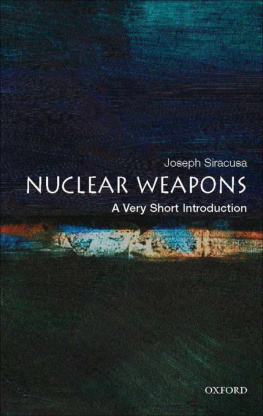
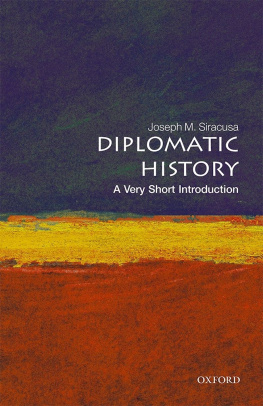





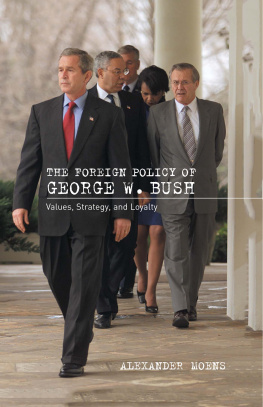
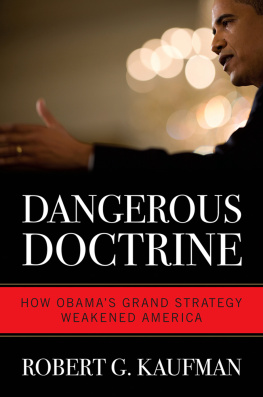
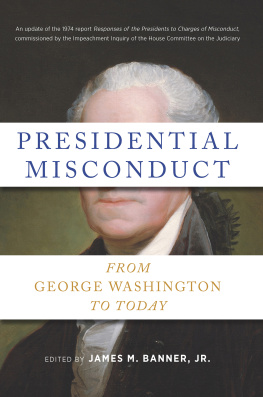

 TM The paper used in this publication meets the minimum requirements of American National Standard for Information Sciences Permanence of Paper for Printed Library Materials, ANSI/NISO Z39.48-1992.
TM The paper used in this publication meets the minimum requirements of American National Standard for Information Sciences Permanence of Paper for Printed Library Materials, ANSI/NISO Z39.48-1992.